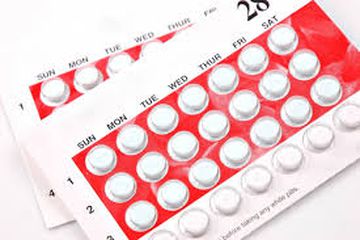A Young Woman's Guide To Contraception Options
For young women trying to climb the corporate ladder, having kids is an agenda. With stricter deadlines, unavoidable offsites, sudden promotions, immediate relocation requests and once-in-a-lifetime projects – an unplanned pregnancy can throw all your corporate ambitions completely off track. Contraception is the best way to ‘plan’ a pregnancy. From pills and IUD devices to barriers, there are various methods of contraception they can choose from. It is better to plan your family than to become unwilling parents.
Here are a few contraception options for today’s young women:
- Pills - Contraceptive pills contain synthetic hormones like estrogen or progestin or a combination of them which interfere with the process of ovulation. They either stop ovulation or thicken the cervical mucus, making it difficult for the sperm to reach the egg. They need to be taken every day, preferably at the same time. However, pills may cause some side effects like headache, indigestion, bloating, etc., which may vary from person to person.
- Condoms - Condoms are a physical barrier that prevents the sperm from entering the uterus. There are two types of condoms - male condoms and female condoms. The former is like a sheath that covers the penis and collects the sperm. Female condoms are thin, flexible pouches that are inserted in the vagina before intercourse.
- Diaphragm - This is a shallow flexible cup that has to be inserted in the vagina before the intercourse. It needs to be left in place for about 8 hours after the intercourse, but removed within 24 hours. It can be reused for 1 or 2 years.
- IUD - Intrauterine device (IUD) is a t-shaped device that is physically inserted into the uterus to prevent pregnancy. Copper IUD and Hormonal IUD are popularly used. The former releases small amounts of copper in the uterus causing an inflammatory reaction and preventing the sperm from reaching the egg. These IUDs can function well for up to 12 years. When the woman wants to conceive, it can be removed easily.
- Vaginal ring - This is a thin and flexible ring about 2 inches in diameter that needs to be inserted in the vagina. It works on the same concept as the pills and delivers a combination of hormones in the body. A ring can be worn for 3 weeks (in order to have one ring-free week) or it can be worn continuously for 4 weeks.
- Birth control patch – It is a thin square patch that sticks to the skin, anywhere on the abdomen, buttocks, upper arm or upper torso (except for the breasts). Similar to pills and ring, it releases hormones through the skin into the bloodstream to prevent pregnancy. It is advisable to put the patch five days after the menstrual cycle begins. This way it ensures protection against pregnancy right away. The patch is changed once a week, on the same day, for 3 weeks in a row.
- Vaginal contraceptives – Vaginal contraceptives are mainly foams and suppositories. They are 80% effective. Foam comes in a pressurized container with a nozzle or a plastic applicator, which is to be inserted deep into the vagina. The foam works immediately, while vaginal suppositories take ten to fifteen minutes to dissolve, and are effective or up to an hour.
Choose the one which you find most easy to implement and after start on it consultation with your physician. Focus on your career and a loving relationship, and when ready – mentally, emotionally and financially – build a loving family.
By Divya Chauhan, CoFounder ItsPleazure
















